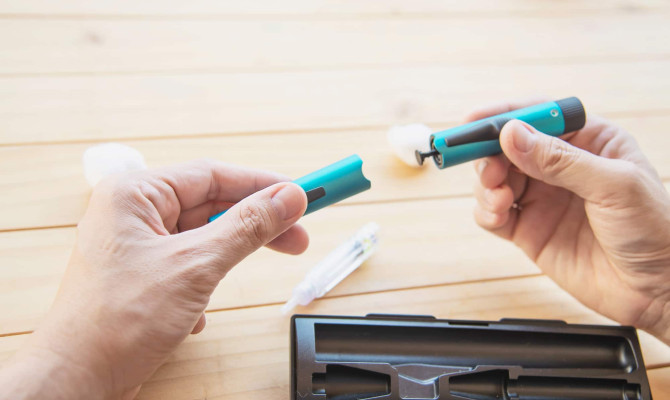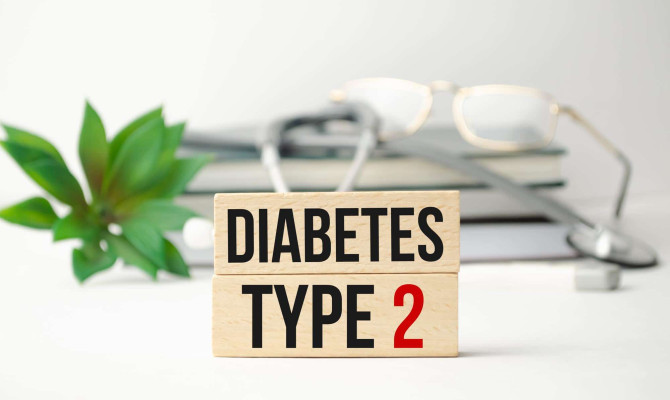Amitriptyline : Uses, Dosage, and Adverse effects

- Amitriptyline
- 16 Aug 2023
Overview
About Amitriptyline
Amitriptyline is a drug that has been approved by the FDA to treat depression in adults. There is a category of antidepressants known as tricyclic antidepressants, which involves amitriptyline. 1Overview| Researched based study from Nlm.nih.gov
It achieves its effects by boosting the levels of specific naturally occurring chemicals in the brain that are essential for preserving mental equilibrium. In addition, it is used for medical purposes not approved by the manufacturer to treat chronic pain syndrome, anxiety, and sleeplessness. Because it carries a significant risk of adverse effects, it is no longer typically utilized as an initial treatment option for depressive disorders.

Uses
What is amitriptyline used for?
In addition to its usage in the treatment of eating disorders, amitriptyline is also prescribed for the prevention of: 1Uses| Researched based study from Nlm.nih.gov ,2Uses| Researched based study from Medlineplus.gov
- Migraine headaches
- Post-herpetic neuralgia (the throbbing, burning, or aching symptoms that can last for months or even years following a shingles infection)
- Post-herpetic neuralgia
- Anxiety
- Post-traumatic stress disorder
- Insomnia
- Chronic pain (diabetic neuropathy, fibromyalgia)
- Irritable bowel syndrome
- Interstitial cystitis (bladder pain syndrome)
- Migraine prophylaxis
- Sialorrhea
Adverse effects
Adverse effects of amitriptyline
There is a possibility that amitriptyline will induce negative effects. Consult your medical examiner if any of the given symptoms survive for an elongated span of time or are considerably severe:2Adverse effects| Researched based study from Medlineplus.gov
- Nausea
- Vomiting drowsiness
- A state of weakness or tiredness
- Nightmares
- Migraine
- Mouth dryness
- Constipation
- Difficulty in urination
- Blurry vision
- Changes in sex drive or ability
- Extreme perspiration
- Changes in appetite or weight
- Disorientation or unsteadiness
Severe side effects
Call your physician right away if you encounter any of the following symptoms:
- A slurred or awkward way of speaking
- Dizziness or faintness
- Crushing pain in the arms or legs accompanied by numbness or weakness chest pain
- Hammering, erratic, or quick heartbeat.
- Severe skin rash or hives
- Puffiness in the cheeks and tongue, yellowing of the skin or eyes
- Jaw, neck, and back muscular spasms
- Trembling
- Symptoms of seizures including excessive bleeding or bruising
- Hallucinating.2Adverse effects| Researched based study from Medlineplus.gov
There is a possibility that amitriptyline will induce further negative effects. Please consult your medical examiner if you experience any odd side effects while using this medicine.
Overdose
Overdose toxicity
Some of the following may be symptoms of an amitriptyline overdose:
- Irregular heartbeat
- Seizures
- Coma or temporary loss of consciousness.
- Confusion
- Problems concentrating
- Hallucination
- Agitation
- Drowsiness
- Stiff muscles
- Vomiting
- Fever
- Low body temperatures
Interactions
Interactions of amitriptyline
Many different medications, including amitriptyline, have the potential to interact with one another and increase the risk of adverse consequences. While you are using amitriptyline, you should never start a new medication without first consulting your primary care physician or a pharmacist.3Interactions| Researched based study from Nhs.uk
With opioid derivatives
- Combining amitriptyline with any opioid-based medication, such as codeine, morphine, or oxycodone, can increase the likelihood that you will become extremely drowsy and struggle to maintain your normal breathing patterns.
With antidepressants
- It’s possible for certain antidepressants to change the way amitriptyline operates, which can lead to dangerously high blood pressure. Even after you have stopped using the medication, this may still occur.
Contraindications
Contraindications of amitriptyline
When treating a patient with medication, one of the most important things to keep in mind is whether or not the medication has any contraindications. Important factors to consider with regard to amitriptyline include the following:1Contraindications| Researched based study from Nlm.nih.gov,3Contraindications| Researched based study from Nhs.uk
- According to the product labeling provided by the FDA, amitriptyline should be avoided in patients who have a history of hypersensitivity responses to either the medication itself or the inactive components of the dose form.
- Amitriptyline should not be utilized in the event that there is a history of QTc prolongation, cardiac arrhythmia, heart attack, or heart failure.
- Patients suffering from angle-closure glaucoma, urine retention, or convulsions should exercise extreme caution when using this medication.
- If you have used monoamine oxidase inhibitors (MAOI), you should wait a minimum of 14 days prior to using them again.
- It is important to avoid using amitriptyline with other medications, especially those that have the potential to increase the QTc interval. These medications include astemizole, cisapride, disopyramide, ibutilide, indapamide, pentamidine, pimozide, procainamide, quinidine, sotalol, and terfenadine. using these medications can result in cardiac issues, such as arrhythmia
- Isocarboxazid, phenelzine, procarbazine, safinamide, selegiline, tranylcypromine, and sertraline are examples of some of the medicines that, when combined with amitriptyline, have the potential to raise serotonin levels. Other possible culprits include procarbazine and safinamide.
- In patients with renal or hepatic impairment, lower doses are recommended.
- Amitriptyline should be stopped before any elective surgery because there is a possibility that it will interfere with the anesthetic drugs, as well as an increased risk of arrhythmia.
There are certain individuals who should not take amitriptyline
Before starting to use amitriptyline, you should check in with your physician if any of the following apply to you:
- Have ever experienced a hypersensitivity reaction to amitriptyline or any other medication?
- If you already have a cardiac condition, taking amitriptyline could make it even more severe.
- Have an extremely uncommon blood condition known as porphyria
- Have liver or renal problems
- If you have epilepsy, taking amitriptyline may cause you to have more seizures or fits.
- If you have ever taken any medications for depression
- If you are pregnant, trying to conceive pregnancy, or breastfeeding
- If you have glaucoma; amitriptyline can elevate the pressure in your eyes
- If you have ever had thoughts about hurting yourself or suiciding
- If you have type 1 or type 2 diabetes
Dosage
What doses is amitriptyline administered in?
Amitriptyline tablets are available in three distinct strengths: 10, 25, and 50 milligrams.
The liquid is also available in three different strengths, with each 5ml spoonful having either 10 mg, 25 mg, or 50 mg of amitriptyline respectively.1Dosage| Researched based study from Nlm.nih.gov
Adult dose
- The initial dose of depression treatment that is prescribed is 25 mg taken once daily before going to bed.
- Therapy can begin at a far lower dose, anywhere from 10 to 20 mg per day if the off-label use in question is chronic pain.
- It is possible to increase the dosage by 25 mg every three to seven days, with the daily maximum ranging from 150 to 300 mg.
- If there is a need for a dose adjustment, it is best to make the change to the dose taken at bedtime.
- In situations where treatment is being discontinued, the clinician should implement a gentle tapering plan to prevent withdrawal symptoms.
Maintenance dose
- The typical maintenance dose of amitriptyline is between 50 and 100 milligrams per day, and it can be taken all at once, especially before going to bed.3Dosage| Researched based study from Nhs.uk
- When the desired level of improvement has been reached, the dosage should be decreased to the minimum effective level in order to keep the symptoms under control.
- After the patient’s condition has been stabilized, amitriptyline treatment should be maintained for at least three months and maybe longer.
Pediatric dose
- When it comes to smaller children, the starting dose is determined by the child’s weight as well as their symptoms. The physician will instruct you on the appropriate dosage to provide.
- The highest daily dose of amitriptyline recommended for the treatment of pain is 75 milligrams. If you are taking medication to prevent migraines, your primary care physician may prescribe a greater dosage for you.
Storage
How to store amitriptyline?
- Place this medicine in the container it was supplied in, ensure the lid is locked tightly, and store it in such a place where children cannot access it.2Storage| Researched based study from Medlineplus.gov
- It should be kept at room temperature, and avoid any sources of excessive heat and moisture and away from direct sunlight.
- It is essential to store all medications somewhere that children cannot get to or see since several containers, including those containing eye drops, creams, patches, and inhalers, are not constructed to be child-resistant.
- Shutting the safety caps and keeping the medication in a safe region is the best way to prevent young children from accidentally consuming harmful medications.
How to dispose of amitriptyline?
- Medications that are not needed anymore should be disposed off in a manner so that animals, kids, and other adults cannot accidentally intake them.
- You should not, however, dispose of this drug by flushing it down the toilet.
- Instead, you should think about taking part in a program that allows a take-back service for not used or expired medications.
- You can learn about take-back programs in your neighborhood by talking to your community’s pharmacist or consulting with the local garbage and recycling department.
Takeaway
Takeaway tips
- Adults with depression may be treated with the tricyclic antidepressant amitriptyline, which is licensed for use by the FDA.
- individuals who suffer from sleeplessness, severe depression, depression that is resistant to treatment, and individuals who also suffer from comorbid chronic pain disorders may find that it is helpful.
- Patients taking amitriptyline run the risk of experiencing adverse effects that are anticholinergic, antihistaminic, and alpha-adrenergic blocking. Patients who have heart conditions might not be good candidates for this treatment.
- It is possible for it to interact with a wide variety of medications, which raises the risk of arrhythmias as well as serotonin syndrome.
- Patients will need to be stabilized and constantly followed once they have been exposed to toxicity, which can pose a threat to their lives.
- The higher risk of suicidality in children, adolescents, and young adults is something that healthcare workers need to be aware of. This is something that should be discussed with the families of these patients.
Any feedback on this article?
 This Articles content was accurate
This Articles content was accurate Very Informative Article
Very Informative Article I have a question or a comment
I have a question or a comment
 This article contains inaccurate content
This article contains inaccurate content This article was not helpful
This article was not helpful I have a question or a comment
I have a question or a comment
We appreciate your helpful feedback!
Checkout our social pages
References
-
National Library of Medicine
Amitriptyline | Overview | Uses | Dosage | Contraindications
-
Medline Plus
Amitriptyline | Uses | Adverse effects | Storage
-
National Health Service
Amitriptyline for pain and migraine | Contraindications | Interactions





































